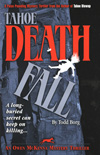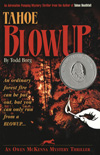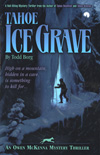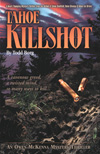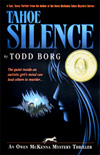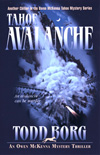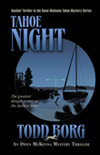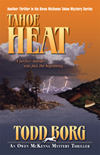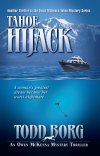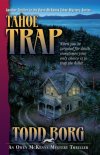It's
likely - but not certain - that the answer is to write a really
good book. In
fact, everything I say after this sentence is predicated on the
assumption that you have written a really
good book and that
your book also has a really
good professional
cover and really
good editing.
Further, an additional assumption is that you are going to repeat the
process multiple times, because few things make more of an impression
on a reader than multiple books, especially those in a series.
But
back to the main topic:
It's
likely that the second best way to make an impression is
to personally meet readers, talk to them about
your book, and, if possible, get them to realize that you're a
halfway decent and interesting person. You don't even have to be
especially charming, although it's great if you are.
Many
readers like to try books by authors they've met. They are naturally
curious about writers. “She seemed really smart. I wonder what her
book is like.”
Meeting
Readers In Person
A
person who reads a book by someone they've never met may - if they
like the book - remember it and the name of the author who wrote it.
But after a few months, their memory may falter. “There's this book
I read that I liked, and it was by this author whose name escapes me, and I guess I
can't really remember the book, either.”
But
if the reader meets the author of that really good book, they will
probably remember that author and her books for years and maybe even
forever. Then, when the reader discovers that the author has
come out with a new book, they may buy it. When they're
trying to think of books to give for holiday presents, they will
remember the author. And they will be pleased to tell the
people on their gift list that they met the author.
Speaking
for myself, of all the books I've read and liked, I've probably
forgotten most of them along with the authors' names. Sorry! But I
remember every single one of those books where I've met the author
and also liked his or her book.
Be
The Author "Entertainment" At An Event
I
do lots of events where I can meet readers. I speak at libraries,
service clubs, book clubs, schools, and author events. I exhibit
books at all of those plus many art & wine festivals, street
fairs, and any other events where there will be a lot of people, such
as at the state fair. I've spoken to retirees and little kids and
every age in between. I've spoken to cops and firemen and
professional women's groups and college students and writer's groups.
And of course, I do bookstore talks and signings.
A
quick count on the “Events” page of my website comes to about 250
events I've done since 2008. (And that doesn't count dozens of non-public events - private gatherings where I've spoken - that aren't on my "Events"
page.) Many of the events I do are multiple-day events. Many are
events with a thousand people walking by every hour, most of whom
probably weren't even interested in books. But for the 5% who were, I
ended up making hundreds or even thousands of impressions.
Ever
since my books began selling well enough that I could quit my day
job, I've been a full-time writer, which gives me advantages of time
and flexibility. But like most writers, during the period I wrote my
first four books I had to work the day job 6 days most weeks and
constrain book events to my limited time off.
That
can be hard. But for most people, there are still 52 weekends a year.
That's a lot of time for events. And many people with day jobs can
get vacation time off. I did, too, and I spent much of those
vacations working on my books and book business.
Like
most writers, in the beginning, I focused on bookstore signings. I
soon learned that while a good bookstore can do wonders for your
career, most do not. At many bookstore signings, I struggled to
connect to anybody among the very few people that wandered the
aisles.
I
soon realized that if I gave talks, I would meet many more people. So
I polished up three different talks and gave them for free to any
group that would have me.
From
there I segued into larger events. I spent multiple vacations
exhibiting at the L.A. Times Book Festival where over 150,000 book
lovers attend. Exhibiting at that festival is great! But the reality
is that I shared that very large crowd with 650 other authors. Same
for the Tucson Festival of Books as well as all other author events.
(I really like the Sonoma County Book Festival in Santa Rosa.) It's
hard to make an impression when you are just one of hundreds of
colleagues all selling books.
But
those shows are still good to attend, as are any and all events where
you personally meet readers.
Festivals
Are Where The People Are
Eventually,
I discovered that exhibiting at events and festivals where I am the
only author, or one of only two or three authors, is hugely more
rewarding. As I mentioned earlier, most people attending such
festivals could care less about authors. In fact, it could be that
many people at such festivals, like much of the general public, rarely read.
But
for those people who are addicted readers, I stand out. “Oh, look,
there's an author here! Oh, look, he writes mysteries! Oh, look,
they're set in Tahoe!”
Next
thing I know, I've sold a book or three. And if the person likes my
books, they may remember me forever. By the end of the festival I may
go home with significant receipts. (Of course, the money is the least
valuable part. The biggest reward comes when those buyers read the
book that I signed for them and they love it enough to order up all
the rest of my books and then tell their friends about it. For a
beginning author, making money is the least important. Getting books
out there is more important. Finding life-long readers is most
important.)
All
Authors Need To Learn How To Sell Books
In
the beginning of my writing career, I worked very hard to sell a few
books. (At one bookstore signing, I sold just a single book. Ouch!)
The
first hundred books an author sells are hard-won sales. But you need
to buy 100 copies of your book and go out there committed to selling
them. That is the only way you will learn the process. Know that it
will be very hard. That way you won't be so discouraged.
The
second hundred are only marginally easier because, while you have
begun to learn what matters to readers, you still won't have built up
any readership that one could call a following.
The
first thousand books sold are a huge milestone because it proves to
yourself that you've learned the basics of how to connect to readers.
And it proves that many of those readers liked your book enough to
recommend it to their friends. Further, it indicates that when you
spend ten times the focus on your newly-refined efforts, you will
sell ten times as many books.
Sometimes,
an author will seem to be struck by a lightning bolt of success after
their first book is published. Their story is splashed across the
media. As a percentage of all authors, it's a very rare event.
Most
authors build their career bit by bit. Success in most fields
only comes after dogged persistence. If you do enough events and do
them long enough, and if you write enough good books, you will
succeed.
With
Time And Effort, You Will Find A Good Audience
I
credit much of my career to all those author appearances.
My
most recent event was the Candy Dance Festival held in Genoa, Nevada
last weekend. The place was a mob scene, and I met a lot of people
and sold a lot of books. More importantly, as I've said, I found a
lot of new readers.
At
the end of the festival, I discovered that one of my author friends,
Stan Paher of Reno, was also there exhibiting his books. When I asked
how the show went for him, his grin was impressive.
So
write some really good books, then get out there and meet people.
Keep the faith, and be persistent. You might be surprised at the
career you can build.
Gotta
go now... I'm exhibiting my books at the Minden Library Author Day in
two hours. And then I pack my car full of books to do a Bay Area show
in Los Altos this weekend.











































